Day 5: Slurping from the Fountain of Youth
Main Page >
2007 Havin' Fun on US 1
Since the Boys savored Savannah a bit too much the
night before, they needed to drag themselves out of bed in order to enjoy an
early morning walk through the many Squares of Savannah !
Ogling Oglethorpe's Handiwork
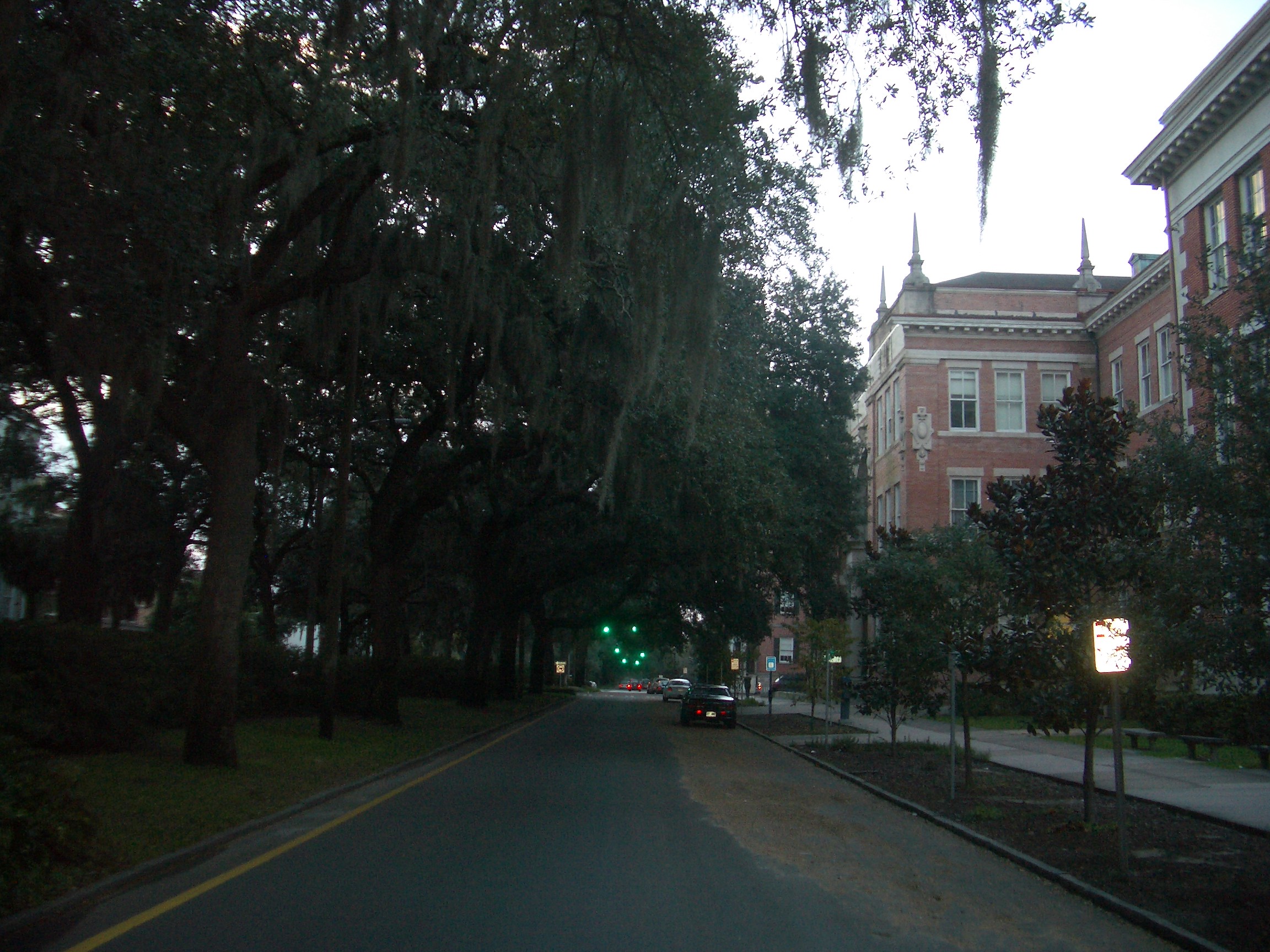
Again the vision Oglethorpe had for Savannah was a planned
city with many squares for markets and social events. These days the squares are
surrounded by incredible Victorian houses and chi-chi, gentrified coffee shops.
Which was just fine for Mike and Bone !!
General Oglethorpe and Poseur
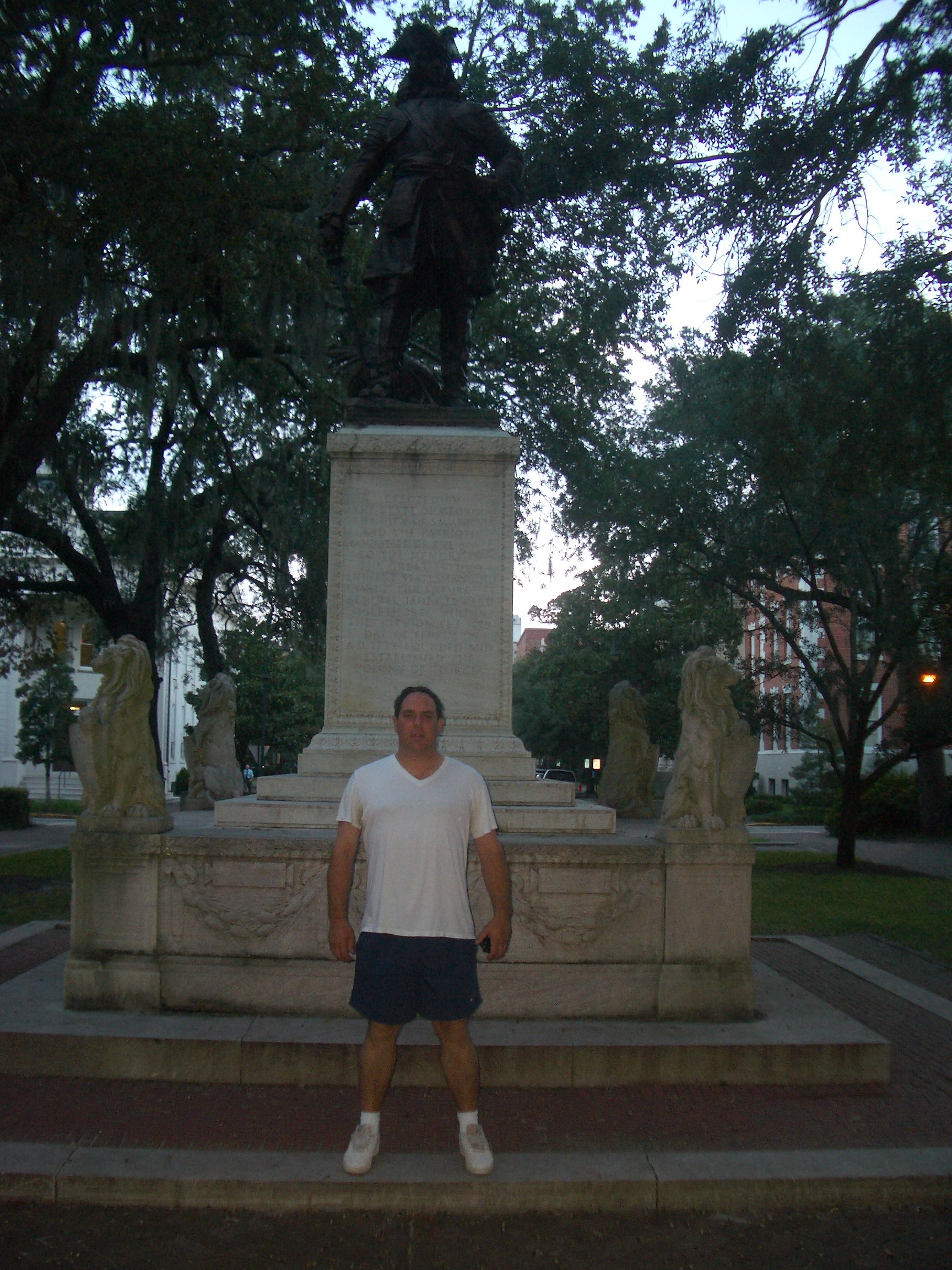
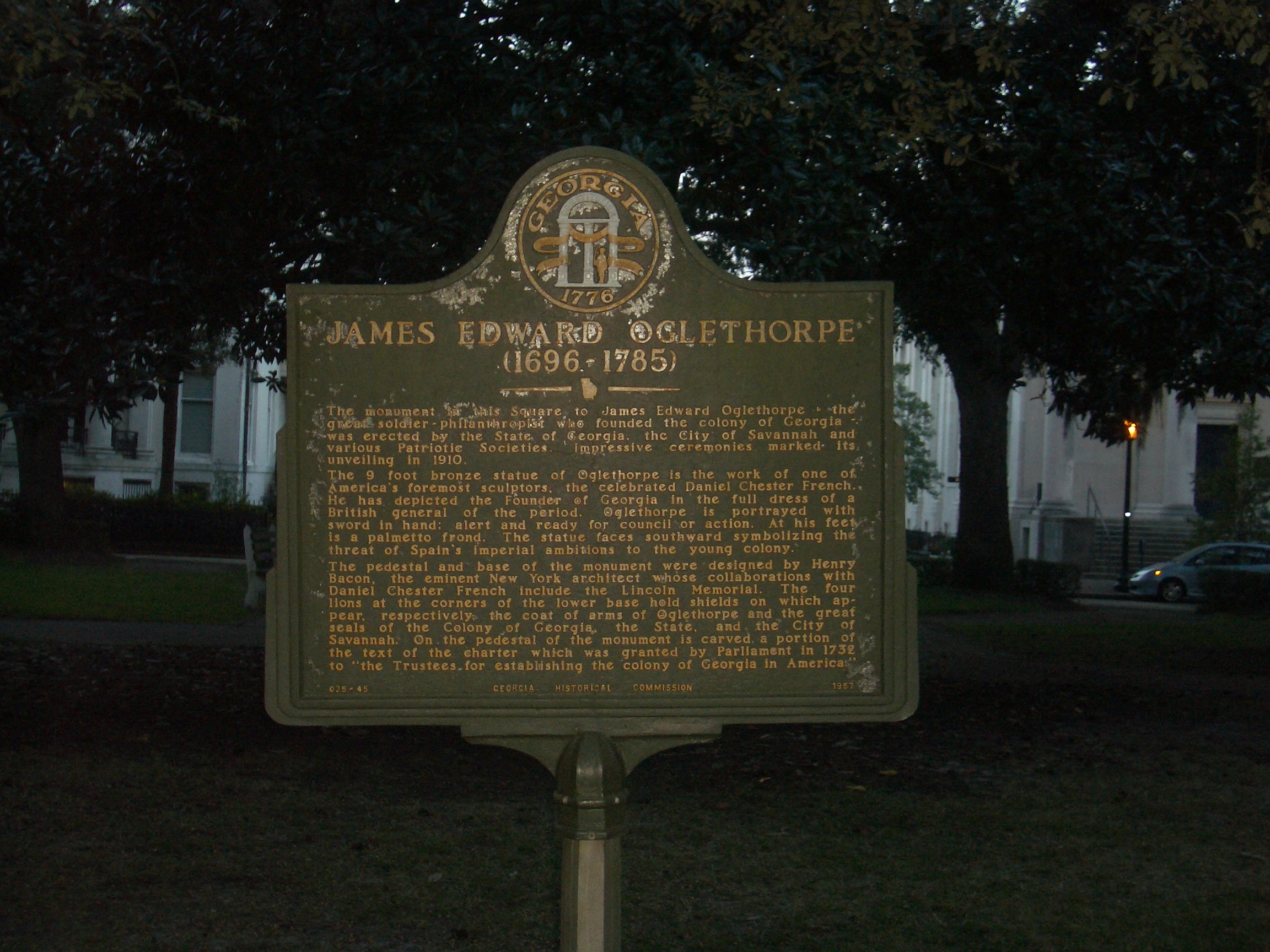
Each Square was a "benefactor" and theme based primarily on
Founders or Revolutionary War Generals.
Mike, jamming on 'joe and the "juju" !
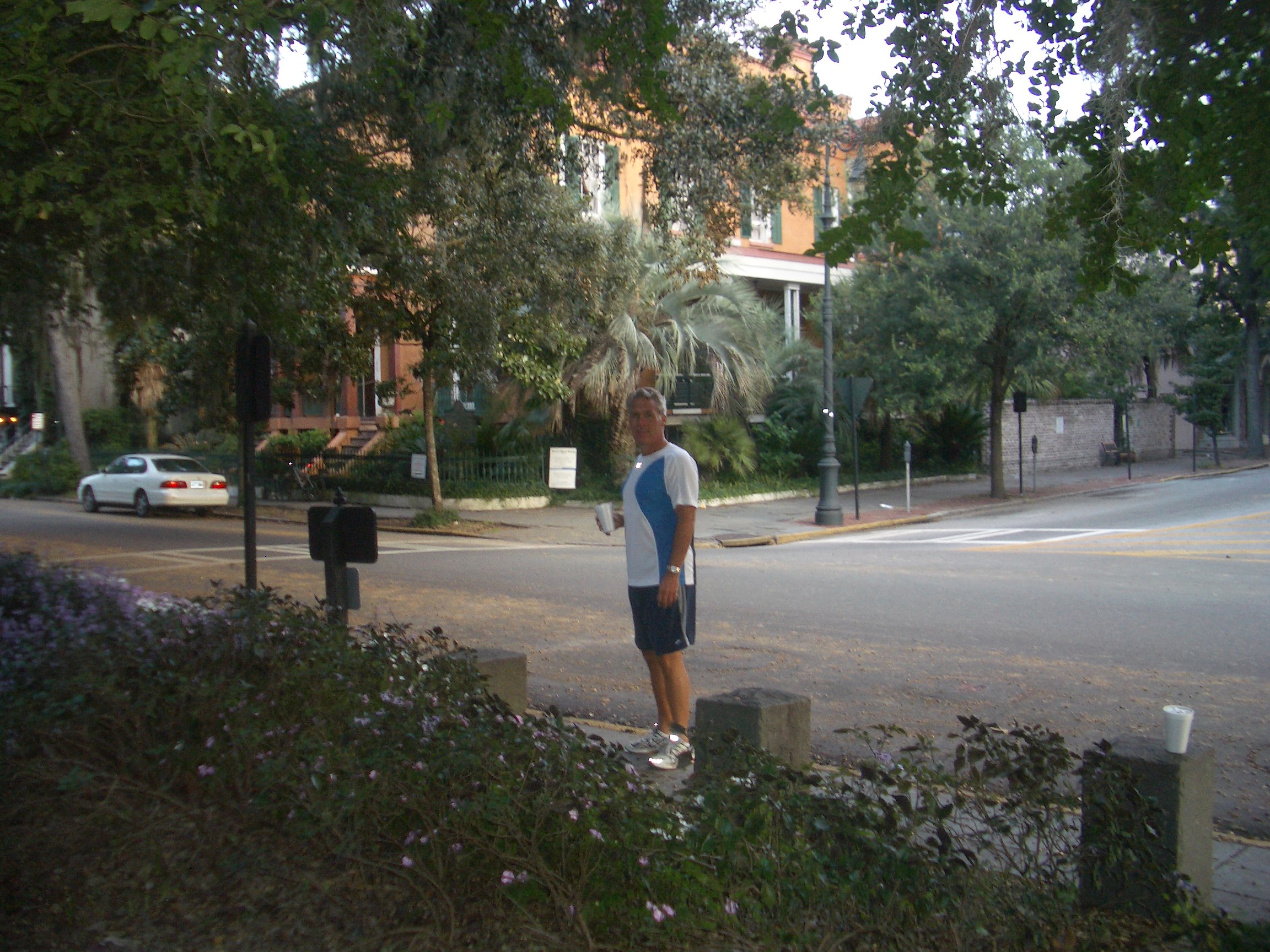
With all the driving the past four days the Boys needed and
wanted this walk, they strolled through all the major squares in Old Town, while
dickering about family and politics.
Sunlight shining on the Spanish Moss
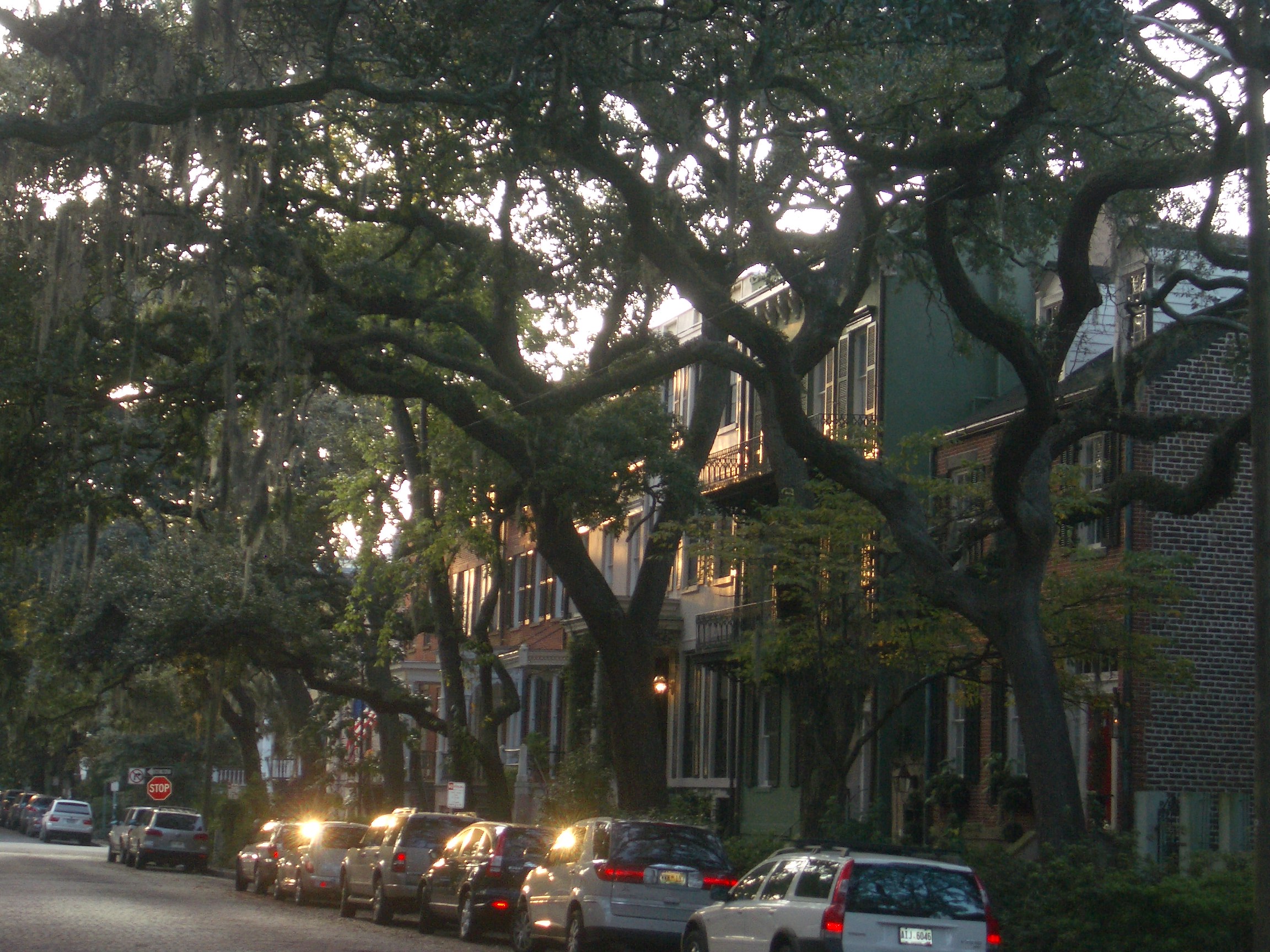
As they strolled they observed that each of the Squares had a "benefactor" and
theme based primarily on Savannah Founders or Revolutionary War Generals. As
Mike and Bone wandered around the sun rose and turned the morning mist into
another steamy day, causing the Spanish moss on the trees to "stand out".
The Scene of the Crime !!
The Mercer Mansion
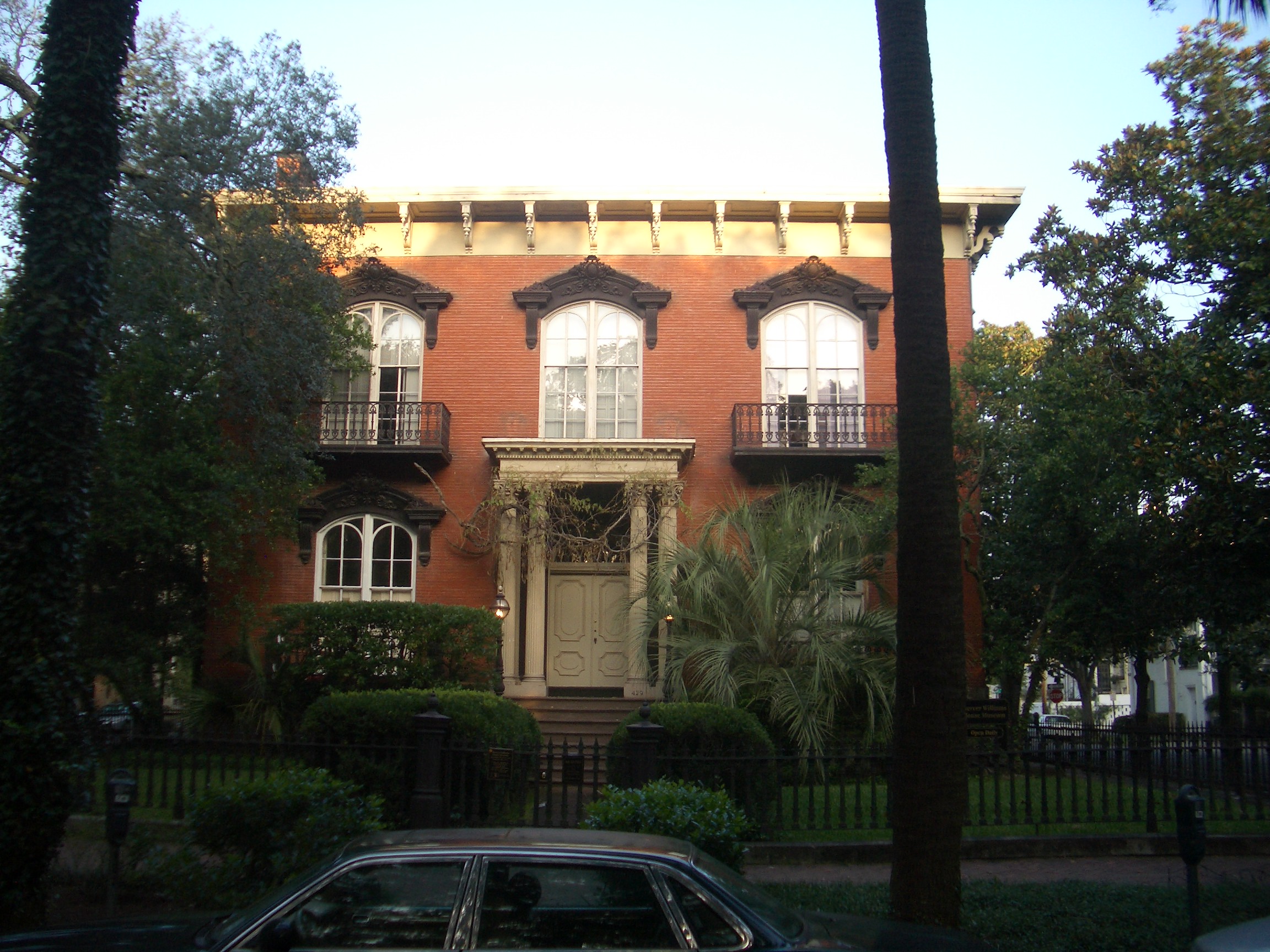
They eventually crossed one of the most famous and infamous spots in Savannah,
the scene of the crime, the place where Jim Williams murdered Danny Hansford,
The Mercer Mansion !!
Interestingly, as the Boys stood in front of the house, a very refined older
women came out in a bathrobe to pick up her newspaper. Despite their grungy
appearance the woman politely answered a few questions and conformed that she
was in fact the current of the home!
Sherman didn't March Here !!!
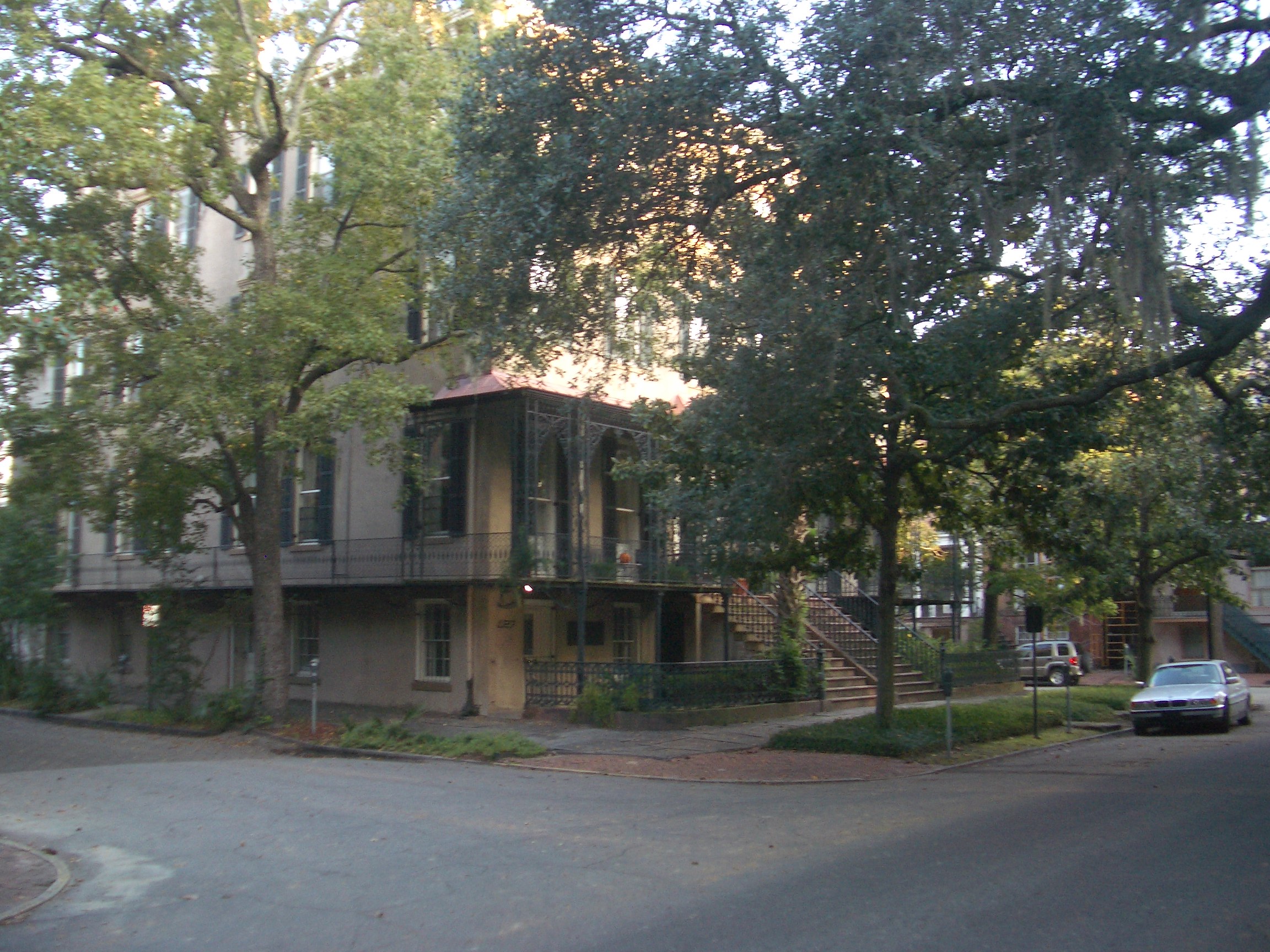
The beautiful pictured above served as General William Tecumseh Sherman's
Headquarter as he ended his infamous march to the sea from Atlanta. During his
march he intended to ravage the countryside destroying the Confederates ability
to make war. However when he arrived in Savannah, the area was so beautiful and
the citizens so nice. with promises to acquiesce that he did not burn the city
to the ground. Once more the powerful partying ju-ju of Savannah made a stern
man gentle !!!
General Pulaski, Revolutionary War Hero
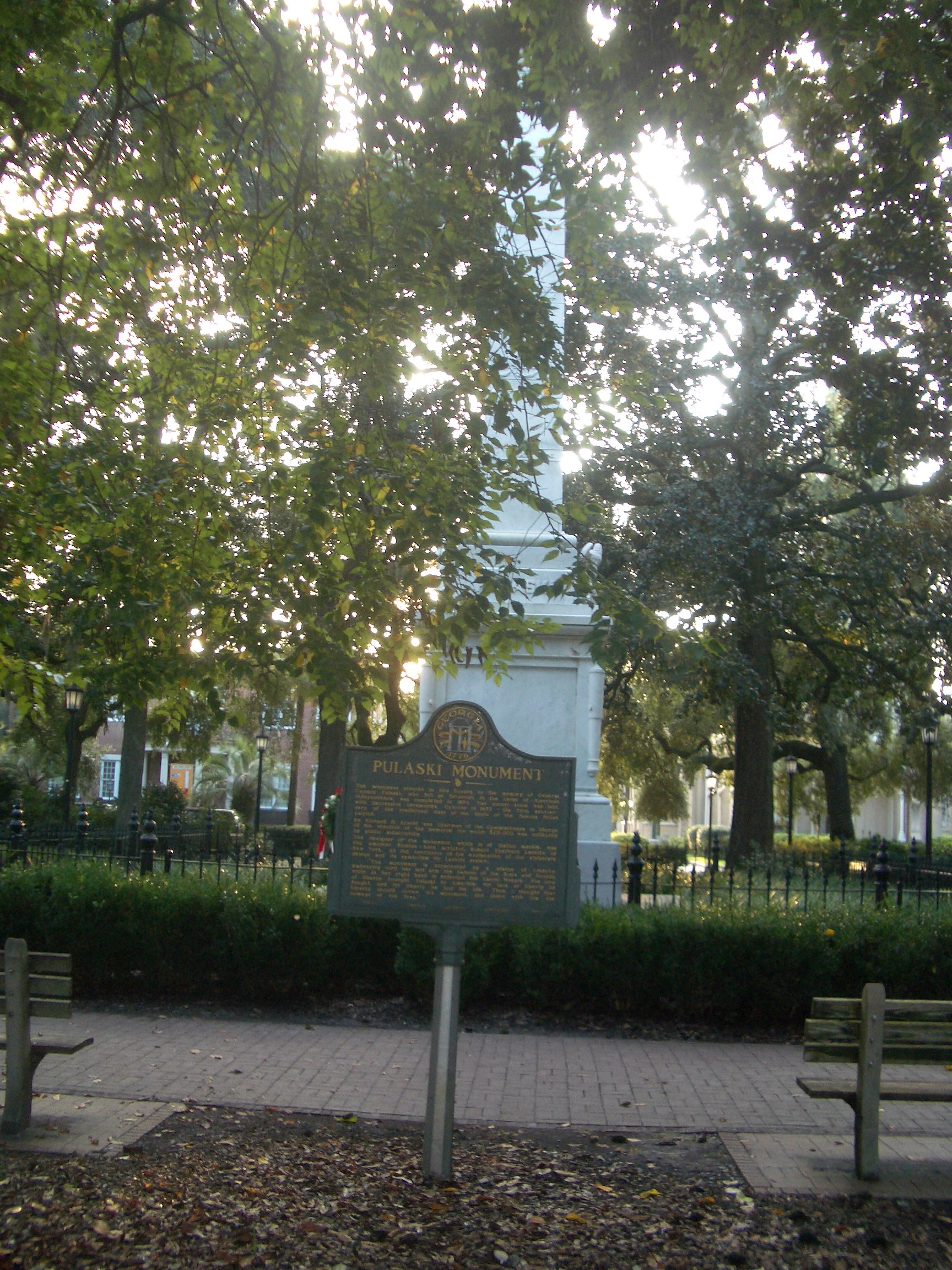
Bone and Bones (the mortal remains of General
Pulaski) in Pulaski Square
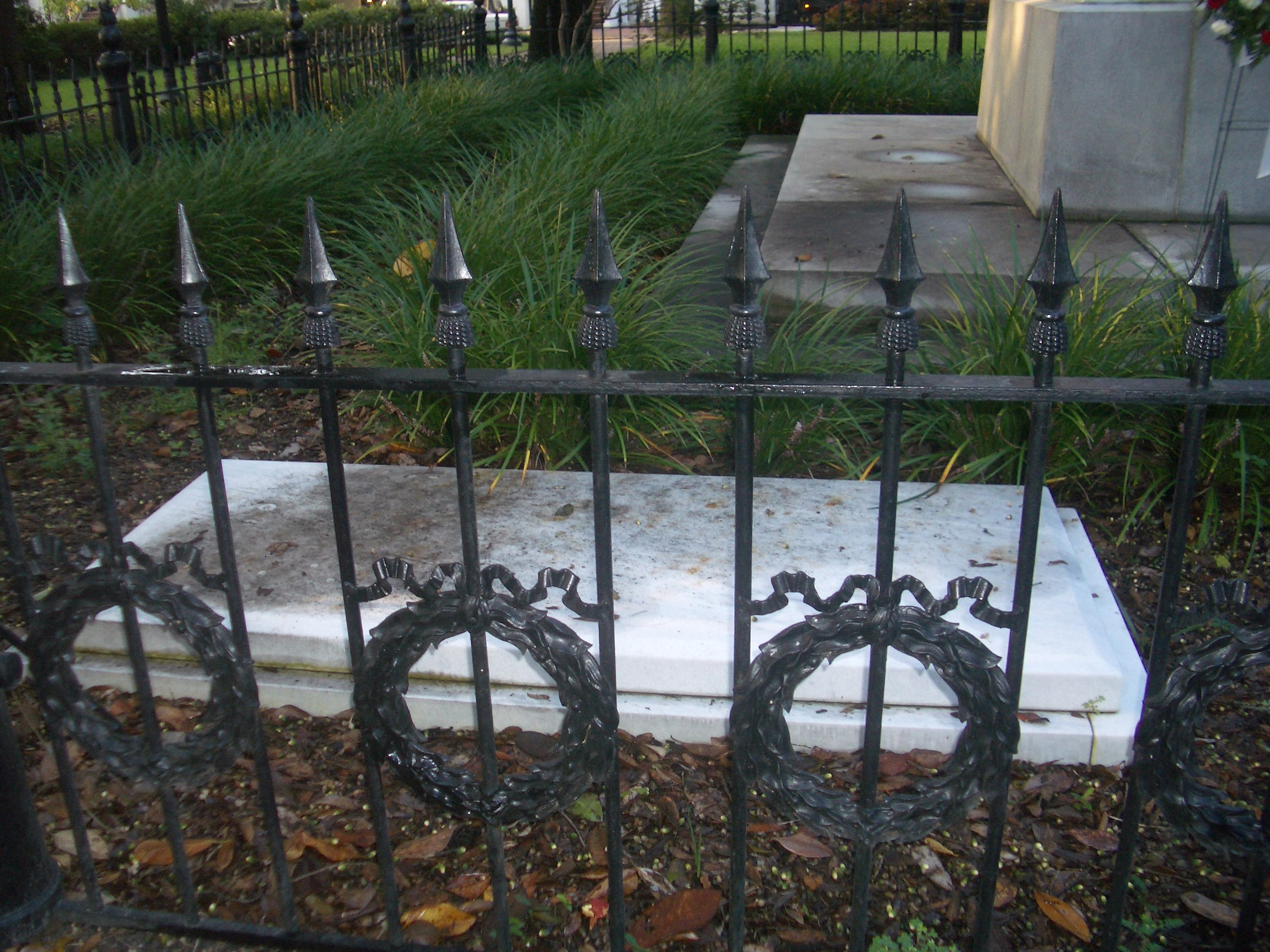
The Scene of the Previous Evenings Late Nite
Pizza Raid !!
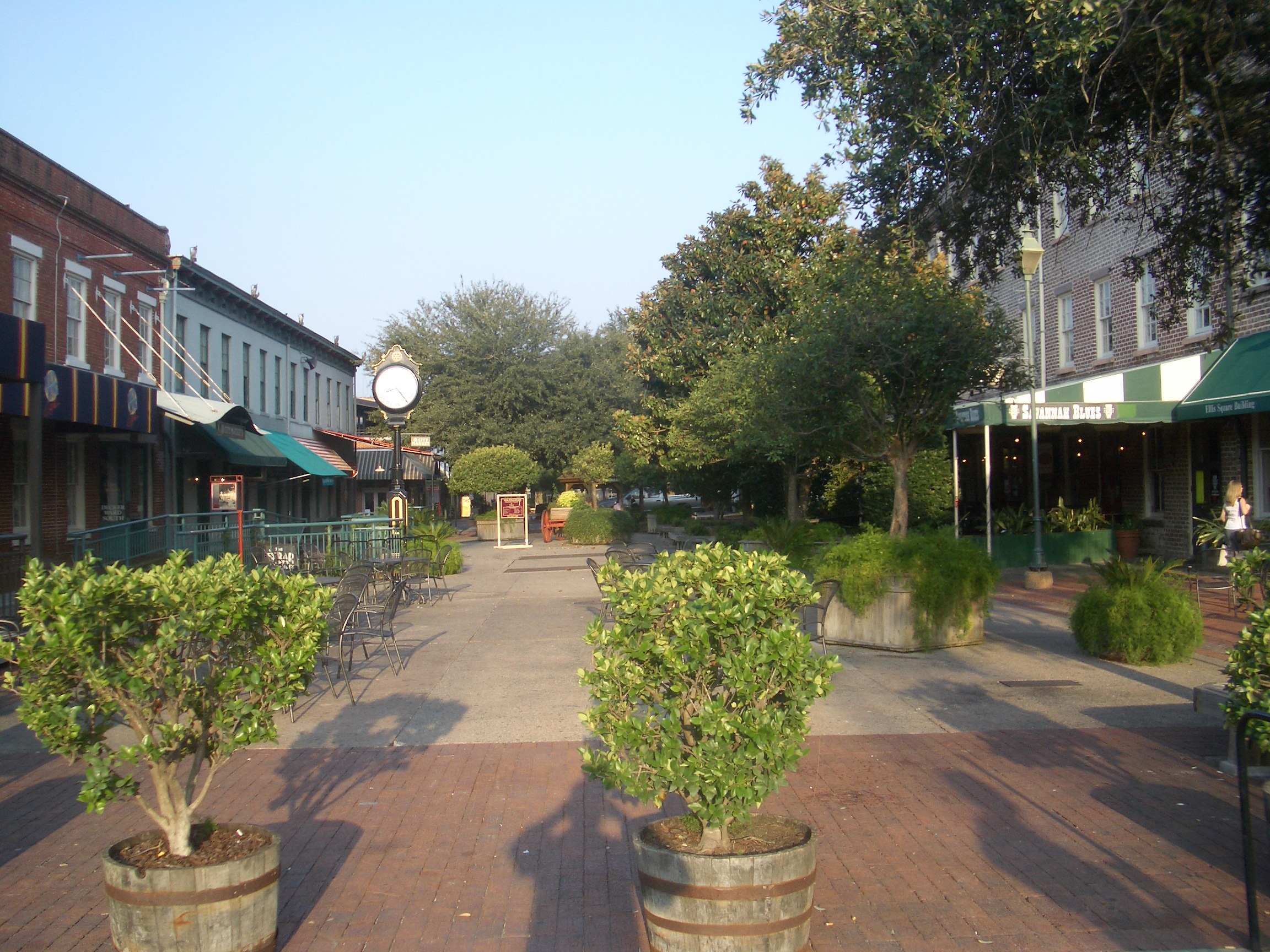
By 9:00 AM the Boys wanted to start south. There goal for the
day was to see St. Augustine and then be strategically placed so that they could
be in Key West tomorrow afternoon, with that they bid a fond adieu to sunny
Savannah!
The 12th State !!!
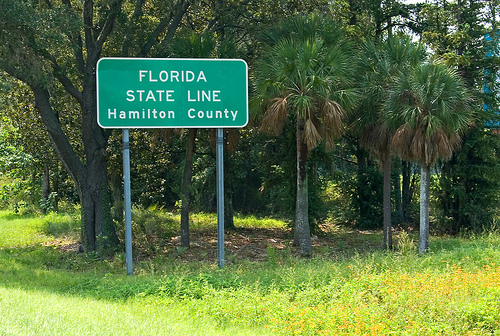
After an hour on the road the Boys passed into the last state
of their Journey, the Peninsula State of Florida !!!
One old, old City, St Augustine!
Right after entering
Florida Mike and Bone know they had to stop at the oldest city in North America,
St Augustine !
Just how old is
St. Augustine ?
St. Augustine
was founded by the Spanish in 1565. A few settlements were founded prior to St.
Augustine but all failed, including the original Pensacola colony in West
Florida, founded by Tristán de Luna y Arellano in 1559, with the area abandoned
in 1561 due to hurricanes, famine and warring tribes, and Fort Caroline in what
is today Jacksonville, Florida, in 1564.
The city was founded by the Spanish admiral Pedro
Menéndez de Avilés on September 8, 1565.
Menéndez first sighted land on August 28, the feast day of Augustine of Hippo,
and consequently named the settlement San Agustín. Martín de Argüelles was born
here one year later in 1566, the first child of European ancestry to be born in
what is now the continental United States.
This came 21 years before the English settlement
at Roanoke Island in Virginia Colony, and 42 years before
the successful settlements of Santa Fe,
New Mexico, and Jamestown,
Virginia. In all the territory under the jurisdiction of
the United States,
only (European) settlements in Puerto Rico are older than
St. Augustine, with the oldest being Caparra, founded in
1508, whose inhabitants relocated and founded San Juan,
in 1521. In 1586 St. Augustine
was attacked and burned by Sir Francis Drake. In 1668 it was plundered by
pirates and most of the inhabitants were killed. In 1702 and 1740 it was
unsuccessfully attacked by British forces from their new colonies in the
Carolinas
and Georgia. The
most serious of these came in the latter year, when James Oglethorpe of
Georgia
allied himself with Ahaya the Cowkeeper, chief of the Alachua band of the
Seminole tribe to lay siege to the city. Spanish
Colonial era buildings still existing in the city include the fortress Castillo
de San Marcos. The fortress
successfully repelled the British attacks of the 18th century, served as a
prison for the Native American leader Osceola in 1837, and was occupied by Union
troops during the American Civil War. It was removed from the Army's active duty
rolls in 1900 after 205 years of service under five different flags. It is now
the Castillo de San Marcos
National Monument.
Heated Historical Interpreter !!!
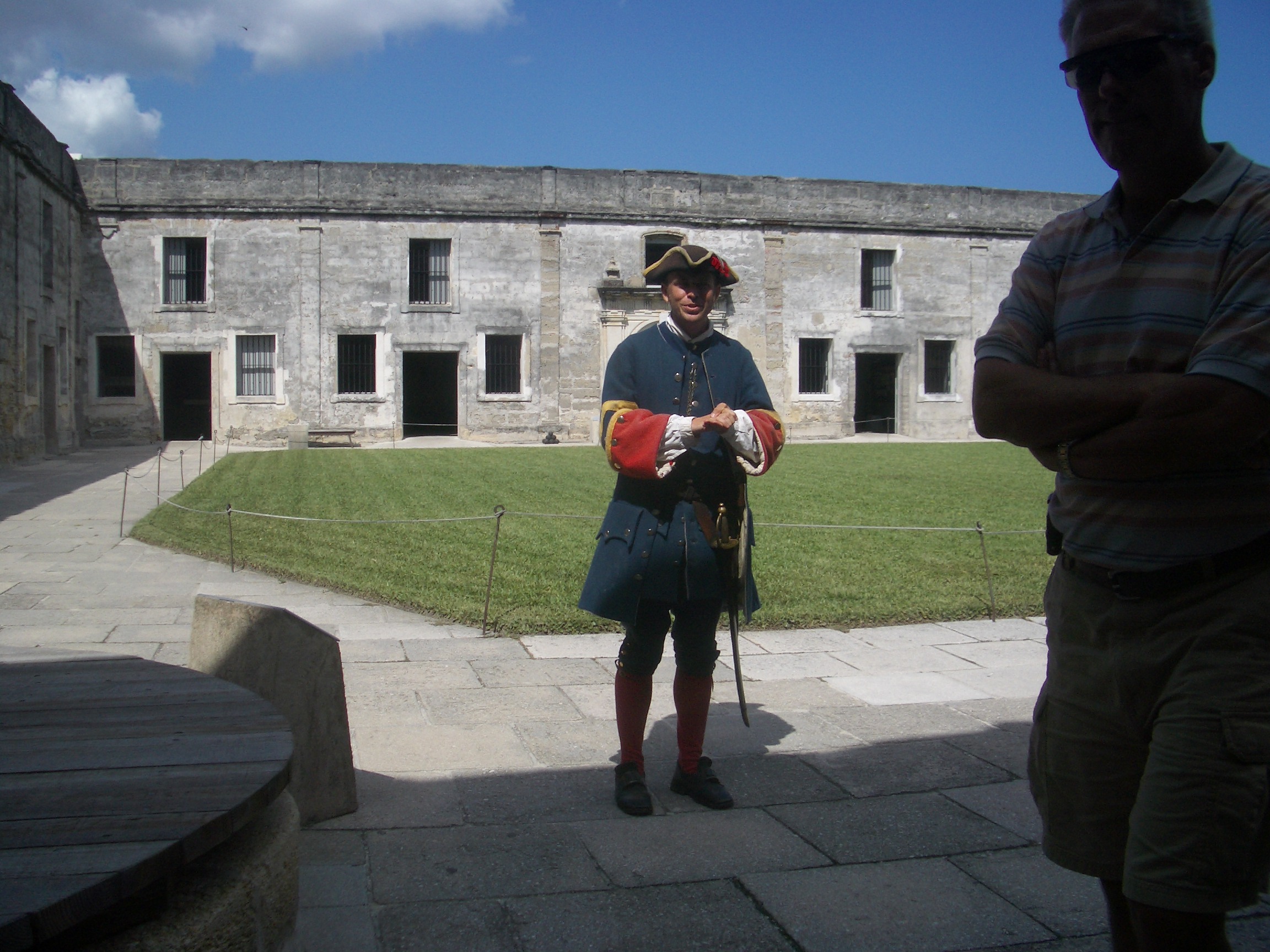
A young fellow in an EXTREMELY hot looking Spanish wool
outfit, regaled Mike and Bone with the history of the Castillo de San Marcos !
The National Park "Conquistador" relayed that the Castillo de San Marcos
is the fort the Spanish built in
St.
Augustine to protect the Spanish from British depredations.
It was known as Fort
Marion
from 1821 until 1942, and Fort St. Mark from 1763 until 1784 while under British
control. Over the first hundred years of St. Augustine, the city
was defended by nine wooden forts. Following the 1668 attack of the English
pirate Robert Searle, it was decided by the Queen Regent of
Spain, Mariana, that a masonry fortification be
constructed to protect the city. In October 1672 construction began on the fort
that would become the Castillo de San Marcos.
Coquina !?!
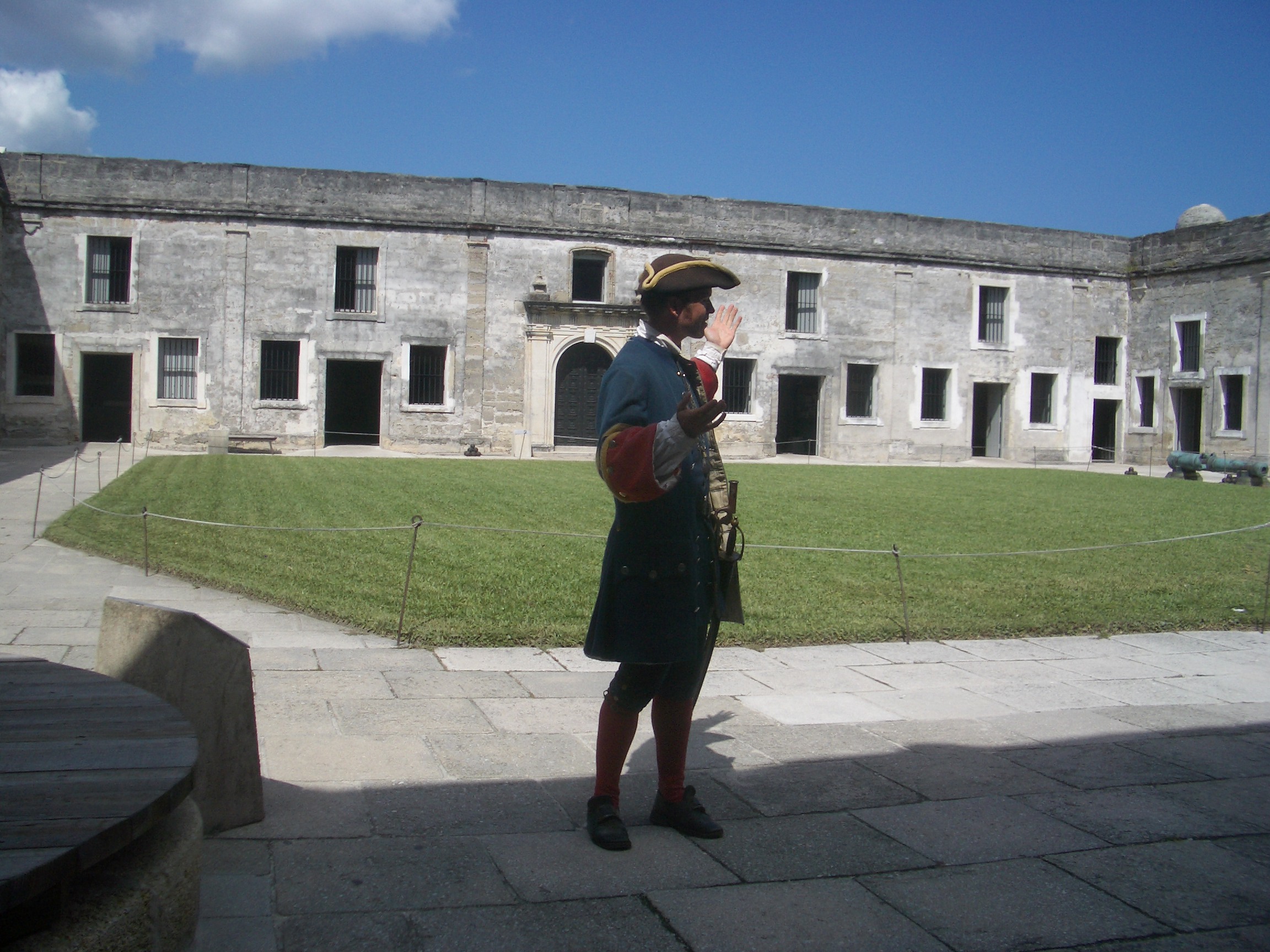
The Castillo is a masonry star fort made of a
stone called "coquina", literally "little shells", made of ancient shells that
have bonded together to form a type of stone similar to limestone. Workers were
brought in from Havana, Cuba,
to construct the fort. The coquina was quarried from
Anastasia
Island across the bay from the
Castillo, and ferried across to the construction site. Construction lasted
twenty-three years, being completed in 1695.
Hot day in the Plaza
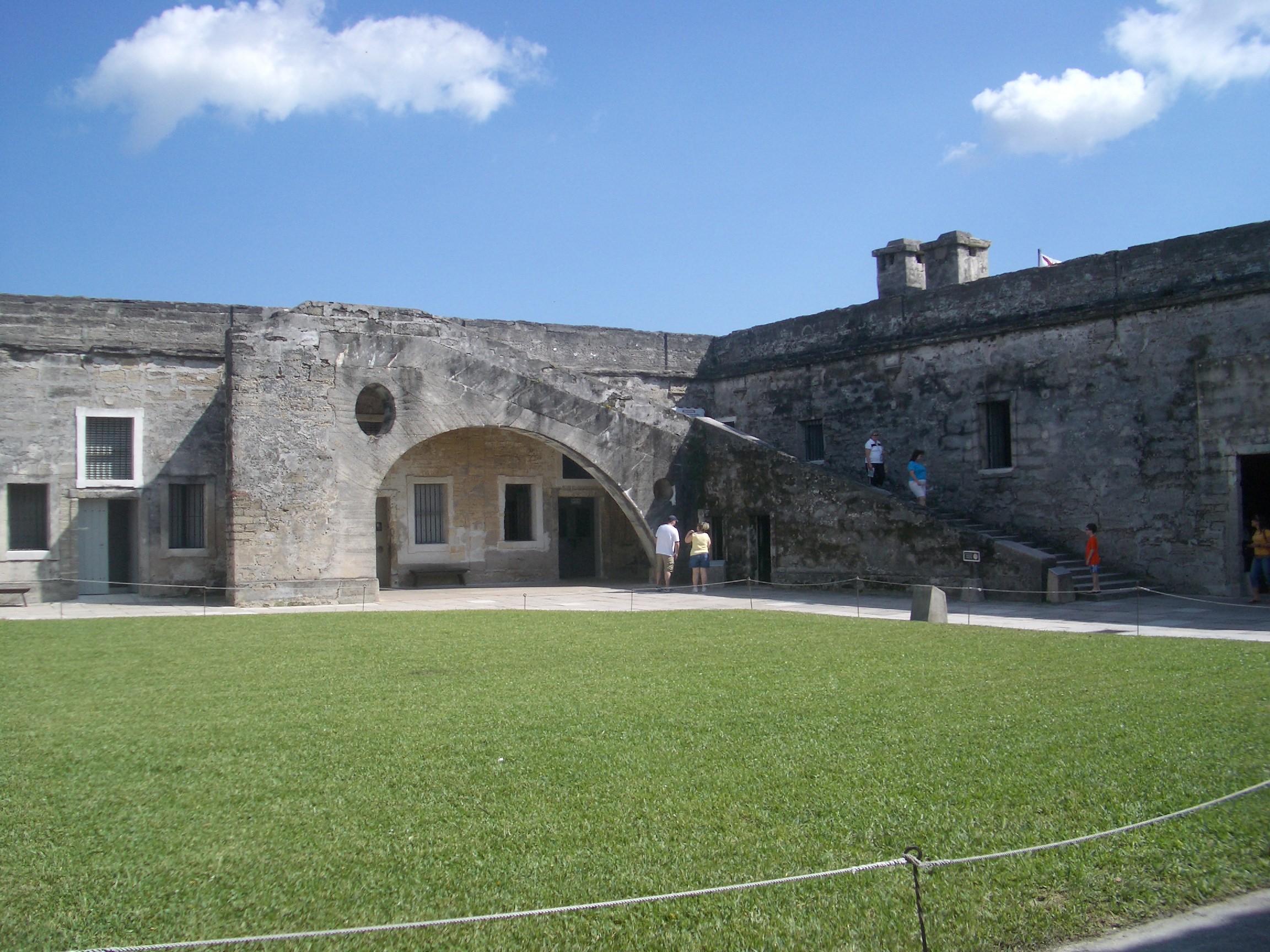
In 1670, Charles Town (modern-day
Charleston,
South Carolina) was founded by the British.
Being just two days sail from St. Augustine,
this was one of the events that spurred the fort's construction. In November
1702, forces under orders from Governor James Moore of Charles Town, set sail
from Carolina in an attempt to
capture the city.
Upon their arrival at St. Augustine,
the British laid siege to the city. All of the city's residents, some 1,200
people, along with all of the fort's soldiers, some 300, remained protected
inside the wall of the fort for the next two months during the attack The
British cannon had little effect on the walls of the fort. The coquina was very
effective at absorbing the impact of the shells, allowing very little damage to
the walls themselves. The siege was broken when the Spanish fleet from
Havana,
Cuba
arrived, trapping the British in the bay. The British were forced to burn their
ships to prevent them from falling into the Spaniards' hands, and march overland
back to Carolina. As they withdrew,
they set fire to the city of St. Augustine,
burning much of it to the ground.
After the siege of 1702, the Castillo underwent a period of
reconstruction. Beginning in 1738, under the supervision of Spanish engineer
Pedro Ruiz de Olano, the interior of the fort was redesigned and rebuilt.
Interior rooms were made deeper, and vaulted ceilings replaced the original
wooden ones. The vaulted ceilings allowed for better protection from
bombardments and allowed for cannon to be placed along the gun deck, not just at
the corner bastions. The new ceilings required the height of the exterior wall
to be increased from 26 to 33 feet
Flags of our Fathers !
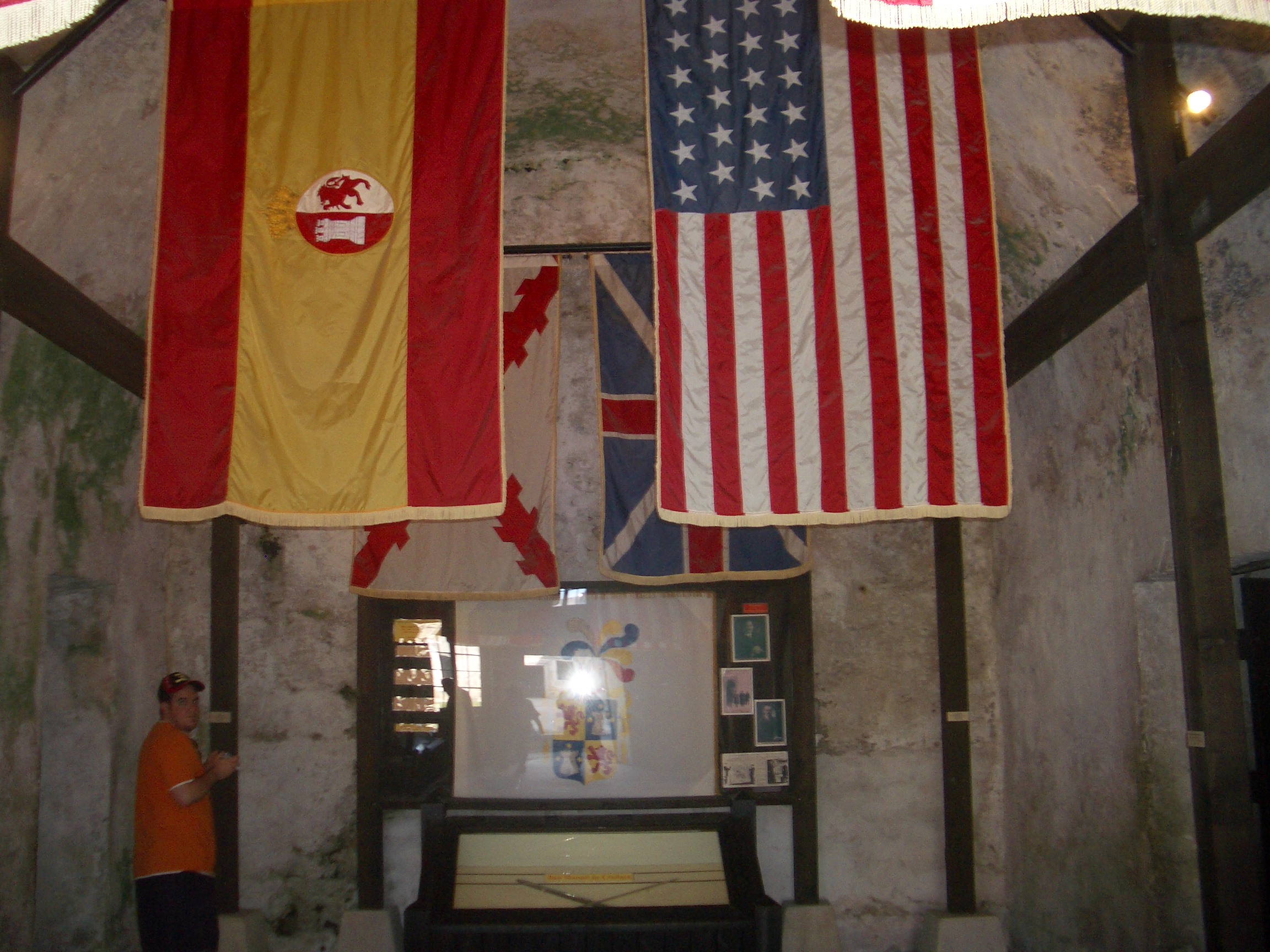
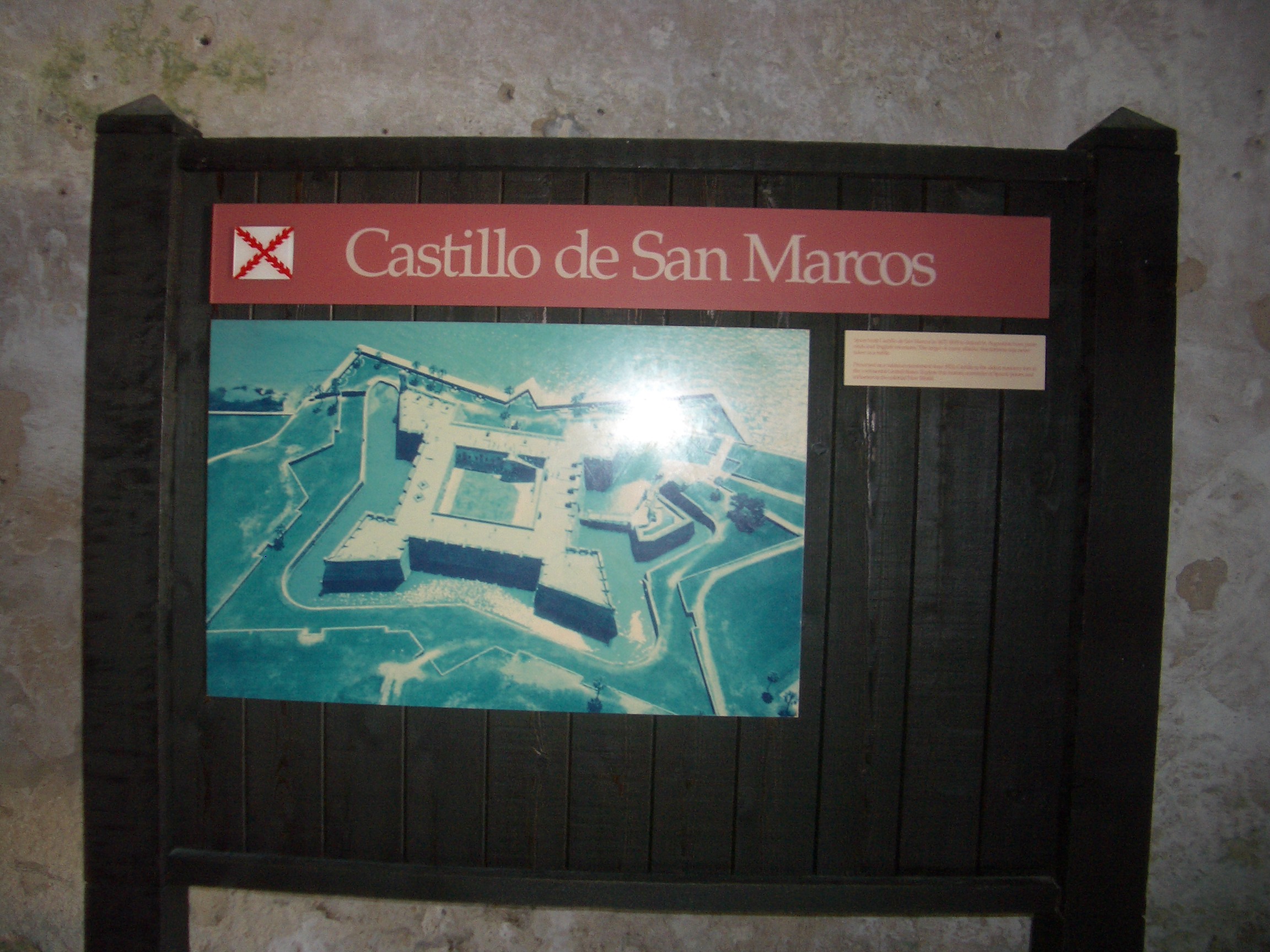
Ornery
Oglethorpe !
Tensions between Great
Britain and
Spain
had been on the rise for years, and in 1739 Great
Britain declared war on
Spain. The conflict was known as the War of
Jenkins' Ear. As part of the war, British General James Oglethorpe laid siege to
the Castillo and the city of St. Augustine.
Governor Manuel de Montiano, the Spanish governor of St.
Augustine, prepared the defenses of the Castillo and the
Spanish colony. Oglethorpe set out from the newly-created colony of
Georgia
and invaded Spanish-held land. After capturing the Spanish outposts of
Fort
San Diego,
Fort
Pupo, Fort
Picolata and
Fort
Mose, he marched his troops toward
St. Augustine.
General Oglethorpe landed his troops on
Anastasia
Island across the inlet from the
Castillo and the city. He began firing on the Castillo in hopes that a sustained
bombardment and blockade would force the governor of
Florida
to surrender. However, a small vessel managed to get through the blockade by
evading the lone British ship guarding the Matanzas Inlet to the south of
Anastasia
Island and set sail for
Havana,
Cuba. When they returned,
they found that the ship guarding the inlet had gone, allowing supplies to be
brought to the Castillo without opposition. The coquina walls of the Castillo
once again withstood British bombardment, and on the morning of the 38th day of
the siege the British withdrew their forces from the area.
Spanish Conquistadors
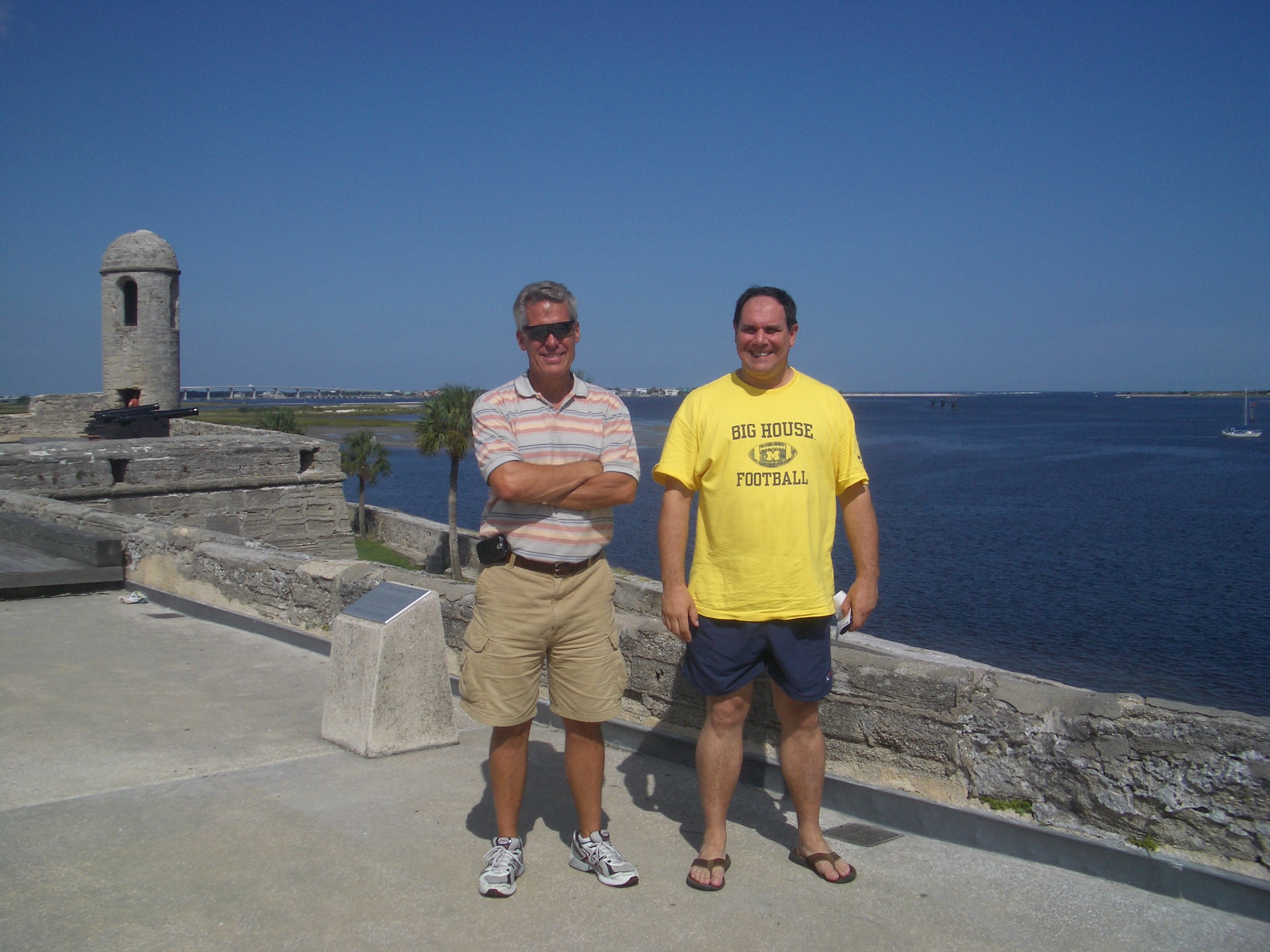
Mike and Bone Protecting St. Augustine !!

Bone, on Guard Duty !!
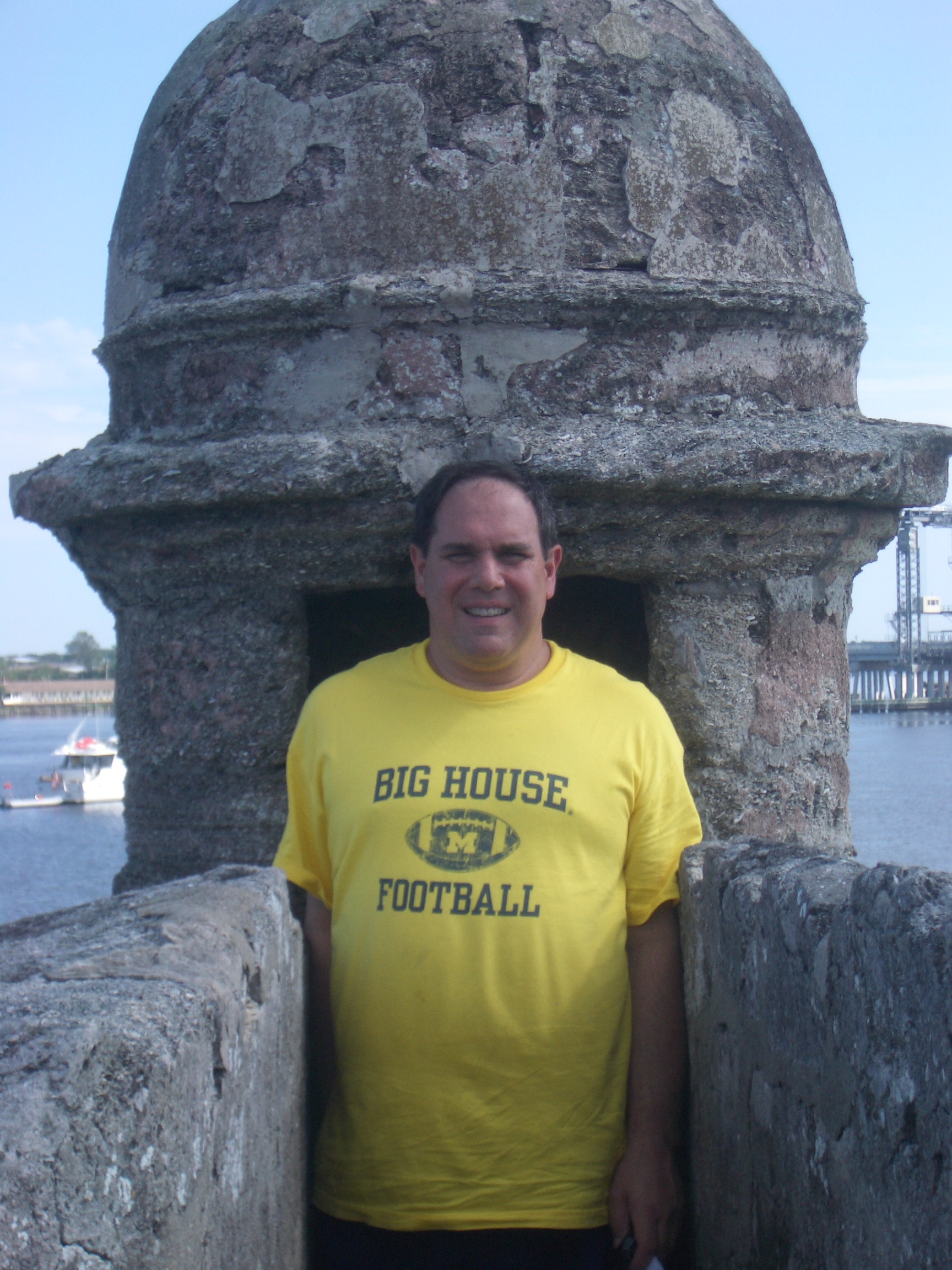
Castillo de San Marcos Protecting our
Shores !
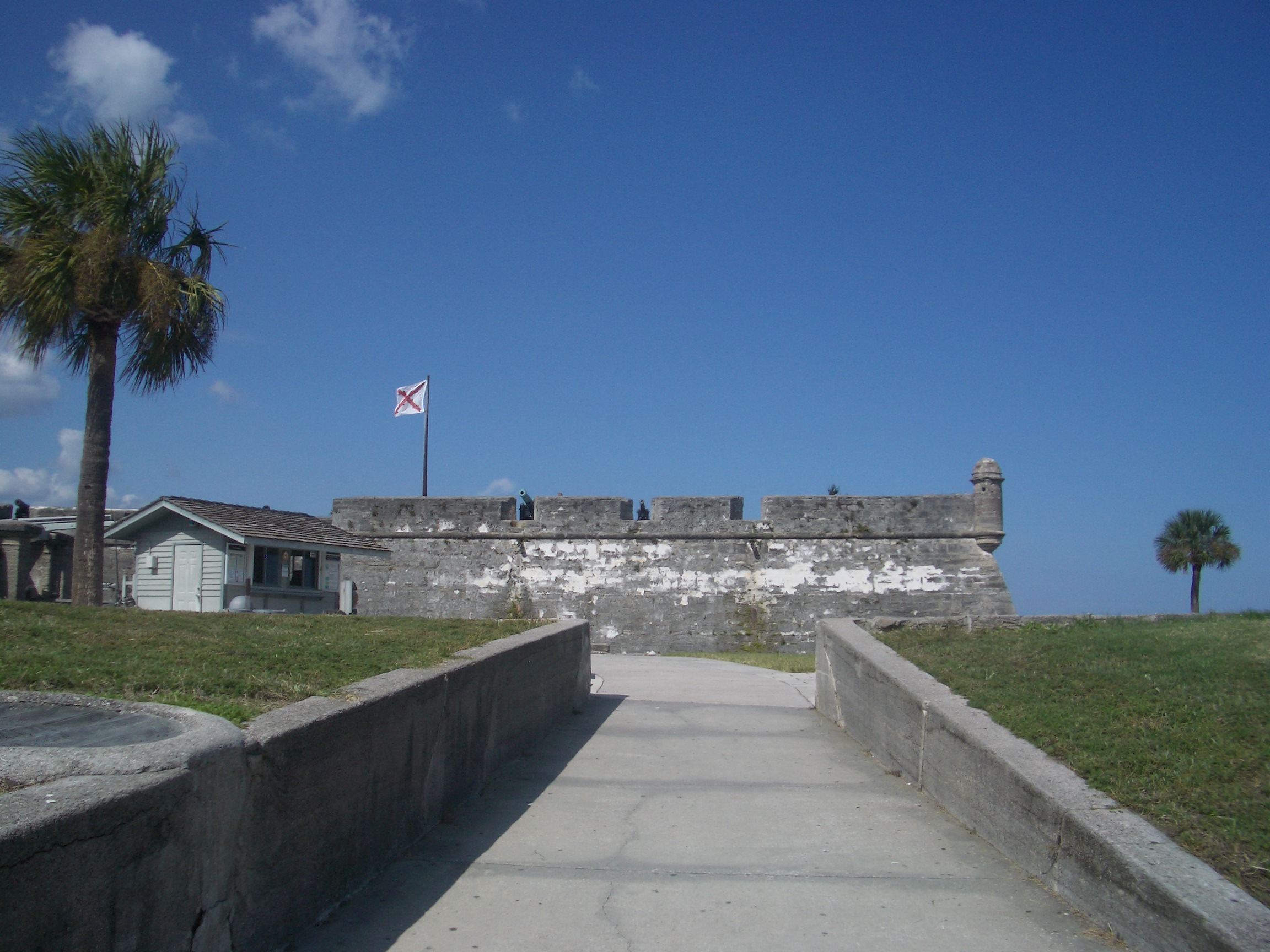
Mike and Bone thoroughly enjoyed the visit, but it was too
darned hot !! With the sun beating down on them mercilessly, they withered back
to the car and headed up a mile to where they hoped some soothing waters would
revive their brittle old bones,,,, the elusive Fountain of Youth !
The Fountain of Youth
Fountain of
Youth, your joking right !?!
When Don Juan Ponce de Leon arrived in
America
with Columbus on his second voyage,
1493. Leon and his fellows, not Columbus, completed
Spain's claim to the New World.
Made governor of Puerto Rico in 1509 and later deposed,
Ponce de Leon, at his own expense, equipped an expedition to the North in 1513.
A few years previous, Amerigo Vespucci had discovered and claimed the South
American continent for Spain.
Two of the mightiest nations in the world stood opposed for proprietorship of
half the globe. Ponce De Leon heard Indians tell of Bimini, a fabulous island in
the North.
Historians do not unanimously honor at full value the beautifully
romantic story that Ponce was
seeking to find the fountain of youth. Yet it was not incredible to men in that
age- when the very existence of a New World was hardly
believable to those who had not seen it with their own eyes - that those who had
touched these shores should believe in greater magic in this strange realm. And
certainly there is no legend more appropriate to the beginning of
America
than that this new land should offer men a vision of eternal youth. Indeed it
has! With his able navigator, Anton Alaminos, Ponce
sailed and charted the ocean's main artery, the Gulf Stream,
shaping the destiny of oceanic transport for all time to come.
" Hey don't get cross with me, X Marks the Spot
!!!"
Ponce de Leon?
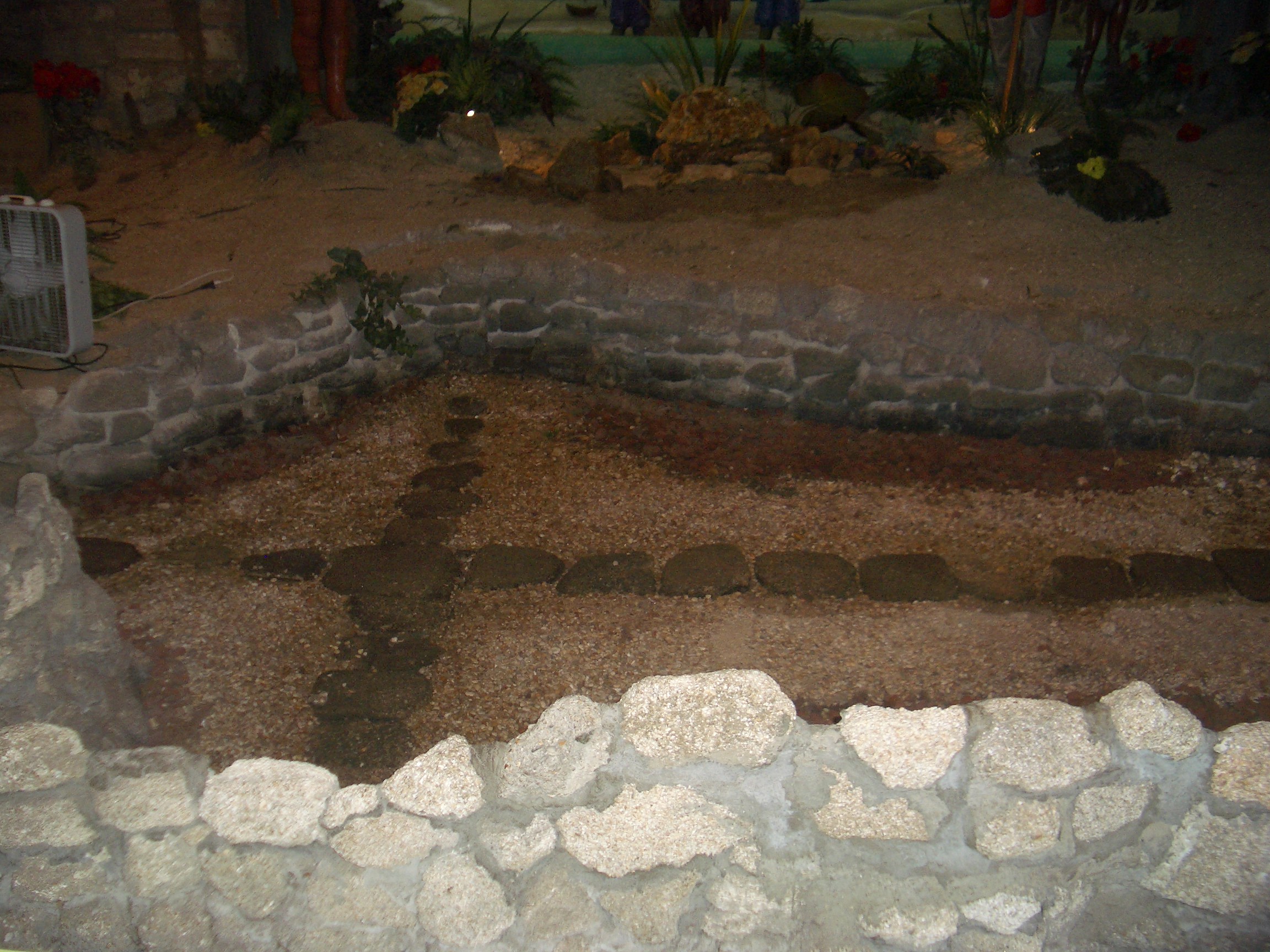
The Fountain of Youth National Archaeological Park in
St. Augustine is the site where Spanish conquistadors
first came ashore in what is now the continental
United States. On April 3, 1513, in the season
of "Pascua Florida" - as Easter Season is known in Spanish (meaning Feast of
Flowers) - Ponce de Leon's expedition sighted land in the present vicinity of
St. Augustine and named it La Florida. When they landed, the priest who had
accompanied the soldiers said a Mass of thanksgiving as the native Timucua
Indians looked on. Ponce de Leon took possession of the continent for
Spain. In later years pioneering Spaniards came
to know St. Augustine Inlet as Barra de la Florida although there is no direct
evidence that Ponce de Leon himself gave the inlet this name. With the landing
of Ponce de Leon, Spanish claim to Florida
was established. Spain
was thus set squarely against England
on this continent. Ponce de Leon's claim in effect, covered all of
America
from Florida to
Labrador, from coast to coast.
He planted his claim through the cross left behind portrayed above.
Well ?,, Ohh, Well !!!
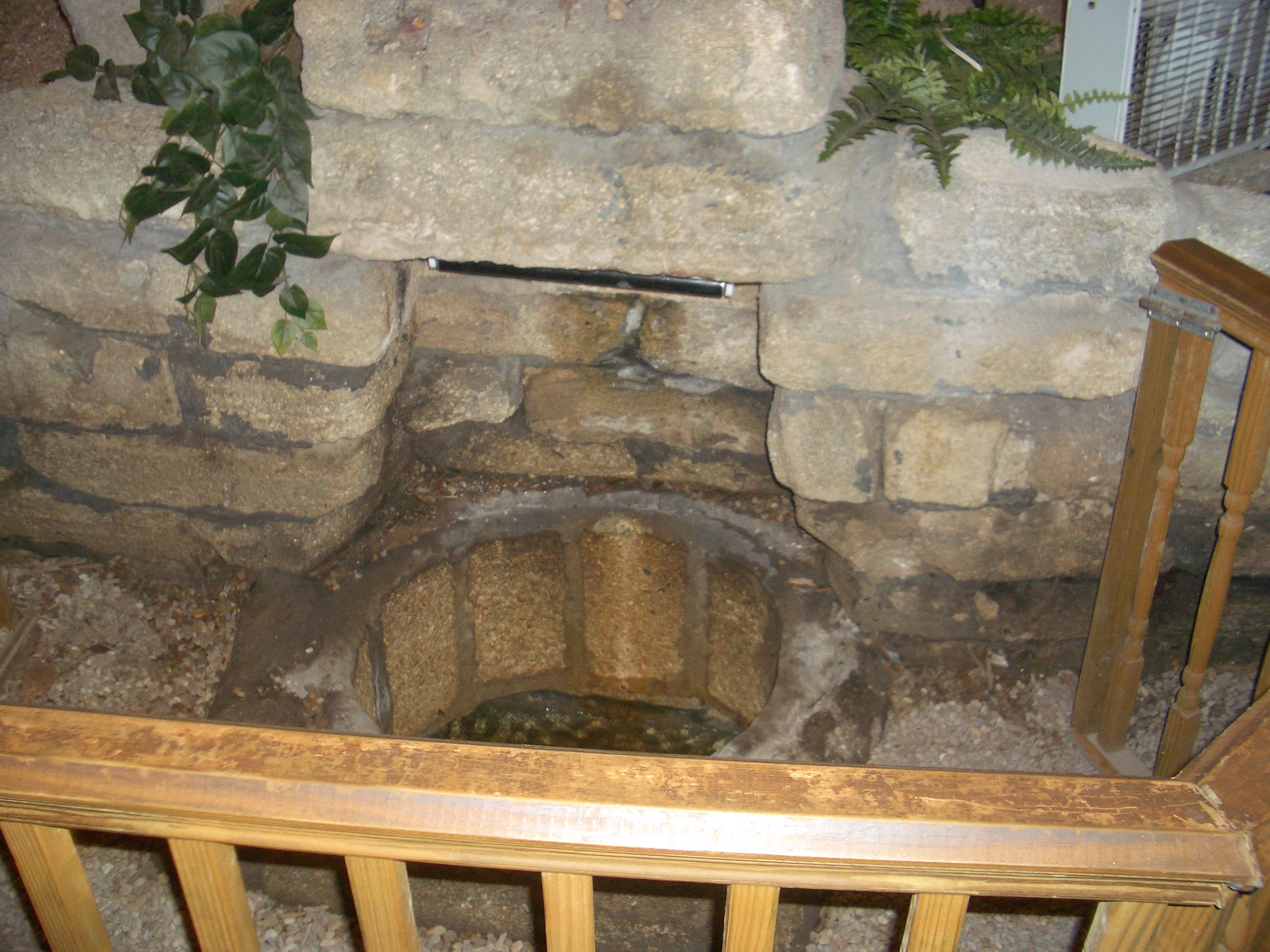
The Spring House is where the stone cross was found.
This is where the Tour Guide provided Mike and Bone water from the "Fountain of
Youth", which ensures that they will remain emotionally immature !!
After wandering around a bit more the Boys wanted to continue to head south
not only to get closer to Miami, but also get into the air conditioning !!!
Heading South, looking for fevered dykes !!!
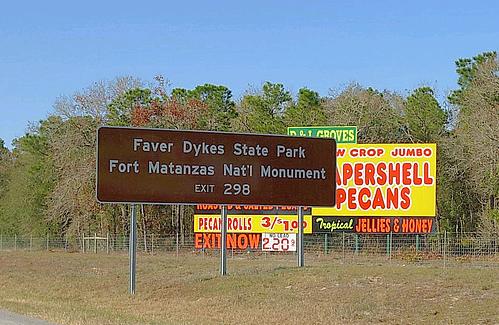
Though the sign was intriguing the Boys were on a mission.... Apparently the
water from the Fountain of Youth had some effect, so to reclaim a bit of their
misspent youth, Mike and Bone wanted to go to Daytona Beach !!!!
Looking for Beaches in Daytona

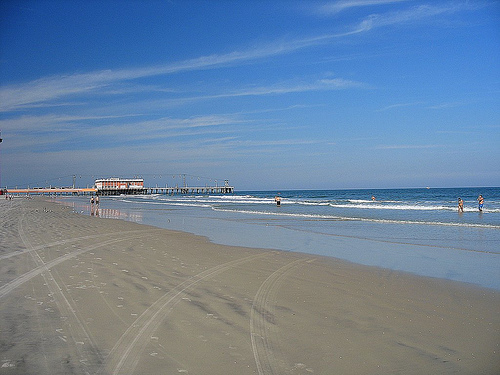
Daytona is still the place that you can pull right onto and drive down on the
beach, so Mike and Bone boogied on down by the board walk, but since it was late
in the day in the middle of the week in October, the college sweeties (that the
Boys envisioned ogling at) were nowhere to be seen, unfortunately, However the
Boardwalk was open and offered Mike and Bone the opportunity to replenish their
rapidly depleting Tequila quotient in their bloodstreams !
Margieing the Boardwalk !!!
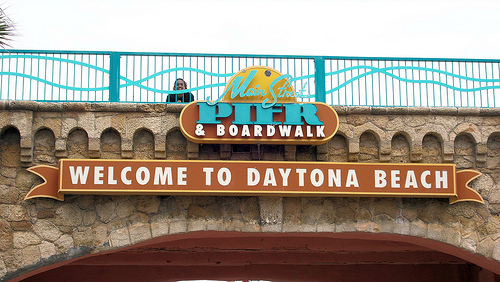
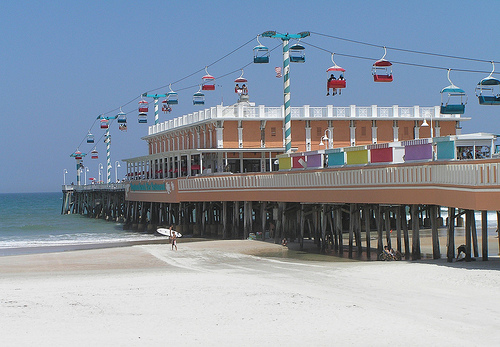
Walking up to the aging boardwalk the Boys saw that the Restaurant had a full
bar and a comely barkeep with a studded tongue to boot ! Mixing Mike and Bone a
coupla of margies the young lady regaled the Boys with her sad tale of her and
her boyfriend's eviction out of their house during the two rounds of the frozen
concoction that helps you hang on. Growing bored with her banter, the booze
emboldened the Boys to order a round for the road and they set off for Greater
Miami !
Mike and Bone Outbacking Tonight
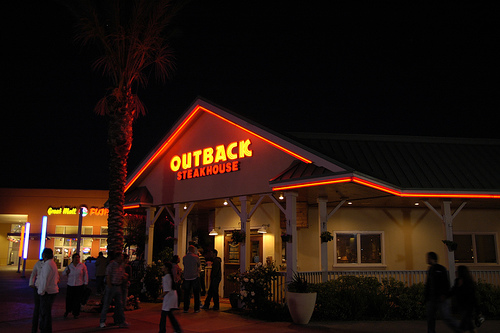
A very
pedestrian end
Mike and Bone's goal was to make it to the outskirts of Miami, so after driving
for about an hour in the dark the Boys stooped around 8:30 15 miles North of
Miami in a very ordinary Clarion Hotel with a strong hankerin' for an Outback
Streak. Grabbing some beef and beers was the right mooove for the tired
traveller's who retired early around 11:00 PM, but ready for the final assault
on US-1 !!





